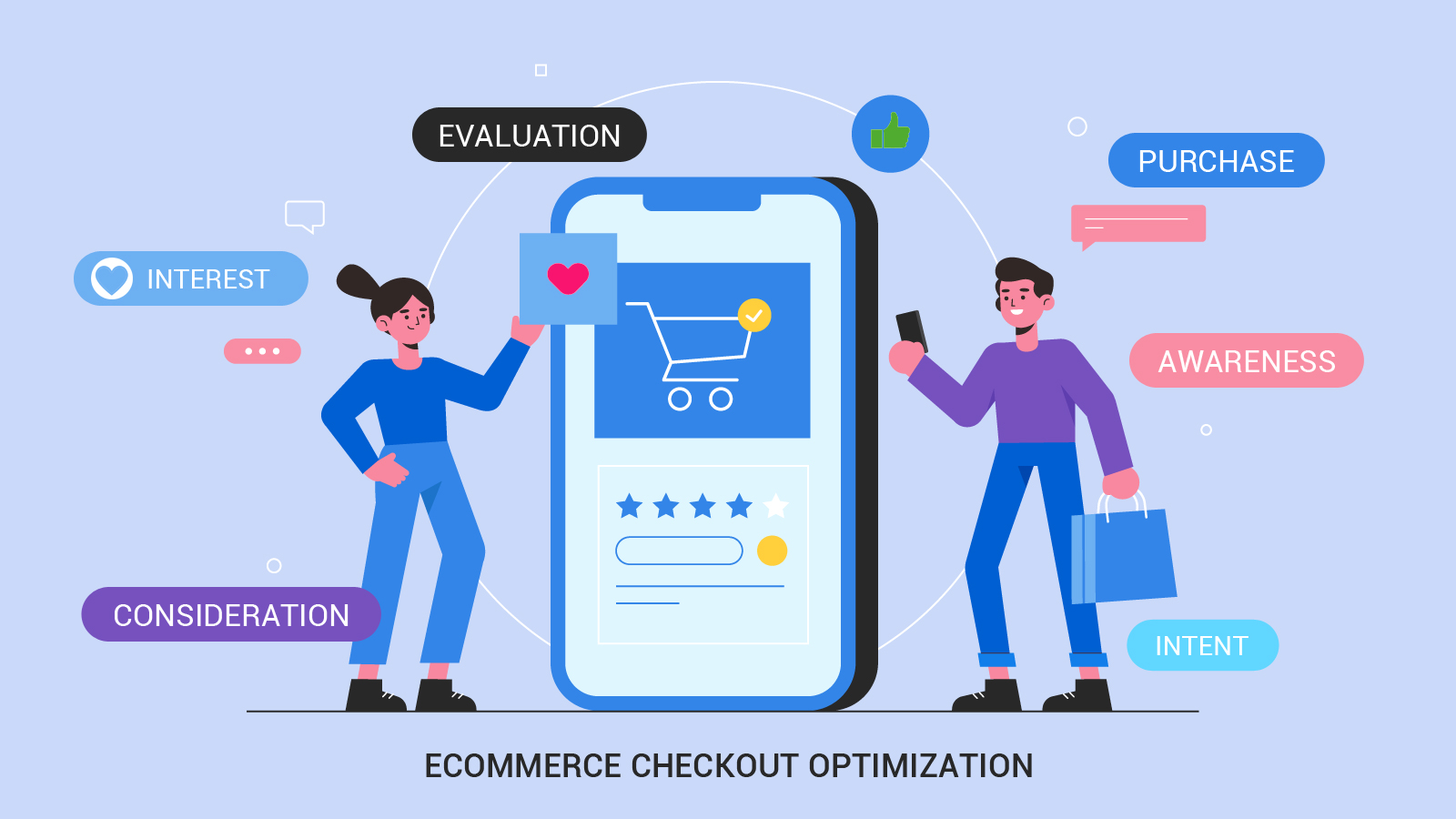There has been a growing need of ‘Ecommerce checkout optimization’ ever since the prospective buyers have been observed leaving their transactions unprocessed on the checkout page. Wondering why?
Is your checkout page clumsy or it’s designed too poorly to convert a prospect into a customer? Irrespective of any reason, the wisest consideration would be ‘ecommerce checkout optimization.’
Having an optimized ecommerce checkout page is one of the key requirements. It has an immense effect over your existing as well as potential customers. Below we are putting out some of the prevalent reasons why more and more prospective buyers are leaving the checkout page without making the transactions –
- Forcing account creation (registration)
- Checkout area is not much self-contained
- Overlong and multifaceted process
- No auto-fill activated
- Complex and unintuitive checkout page design
- Hidden shipping/delivery costs
- Uncertainty of customers’ credit/debit cards safety
How can an ecommerce business benefit from digital marketing solutions?
The goal of digital marketing services is to reach customers at those moments that trigger their ‘interest nerves.’ Therefore, customer electronics agencies not just ensure that consumers get to spot their televisions in the stores, however also that these televisions keep displaying vivid high-definition images. This is exactly why Amazon.com started providing targeted product suggestions to the consumers already registered with them and likely to buy, a decade ago.
Marketing keeps looking for these instants, or what is otherwise known as the touch points, when audiences are open to influence. Today, ‘touch points’ are discussed through “funnel” i.e. a metaphor —customers start with a series of brands in mind (i.e. the wide end of the funnel).
Marketing then methodically cut that move and number through the funnel, and latterly they emerge with the one brand they have made up their mind with. However today, the funnel concept cannot seize all touch points and essential purchase factors occurring out of the eruption of product choices and virtual channels, together with the growth of a judicious, in-the-know consumer.
There is a dire need of a more sophisticated approach in order to allow the marketers route this milieu, which is simpler and lesser linear. ‘The consumer decision journey’ is what the millennial marketers have termed it. This very approach is applicable to all geographic marketplaces which have various kinds of Internet access, media, and also an array of product choices.
The funnel metaphor looks like this -
- Awareness
- Interest
- Consideration
- Consideration
- Intent
- Evaluation
- Purchase
Awareness
Awareness is placed on top of the marketing funnel. Prospective consumers are attracted into this juncture through consumer research, discovery and marketing campaigns. Trust and well-analyzed leadership is recognized with advertising, events, content (infographics, blog posts, etc.), trade shows, direct mail, webinars, social media, viral campaigns, search, media mentions, and many more. Lead generation happens as data is gathered and leads are drawn into a lead management system to nurture down the funnel.
Interest
Once leads get generated, they move to the stage called ‘interest.’ In this stage, company interests are carried forward, along with its products, and all types of useful information and the research it offers. There you get the opportunity to build a relationship with your potential customers in your lead database and release their positioning. What marketers do here is nurture those leads through content and emails that are focused on around brands, industries, newsletters, classes and more.
Consideration
In this very stage, leads convert into marketing eligible leads and are considered as potential customers. Marketers then send potential clients more information on offers and products via automated email campaigns, when continuing to encourage them with embattled content, free trials, case studies, and more.
Intent
In order to reach the intent stage, potential customers are expected to reveal their interests in purchasing a brand’s product. It happens through a survey, post a product’s demonstration, or at the time a product goes into the shopping cart on an ecommerce website. It’s sheer a break for the marketers to build a strong case explaining why their product is a better choice over million others.
Evaluation
In this stage, customers or buyers are finally making a decision about whether or not they should buy this brand’s services or products. Generally, sales and marketing walk hand-in-hand as they move on to encourage the decision-making process and sway them to successfully checkout.
Purchase
Your customers are now on the checkout page! ‘Purchase’ happens to be the last phase in the marketing funnel. This is where a potential customer makes final decision, whether or not should they buy and become a customer. This is where sales take place, resulting in transaction. If the buyer ends up shopping with all positivity, they will lead referrals to your ecommerce site.
To sum it up
While it is very much of importance for ecommerce owners to focus on the sale always, to not forget that their customers are scattered across various fields is as well important. If you could herd them through the right gates utilizing right ecommerce checkout optimization and marketing strategy, you can expect a much more reliable customer pipeline.


 rohit
rohit


